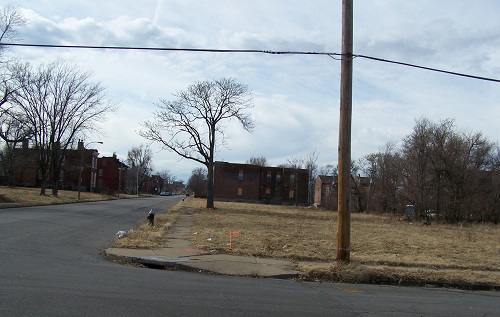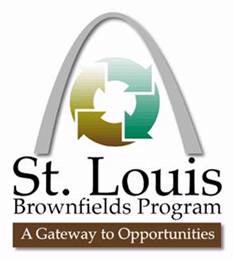Gallery Contents
Habitat for Humanity Home Build

51 vacant lots comprised the Habitat for Humanity’s Ward 19 2009 Project site, on the streets of Sheridan and Thomas in St. Louis's JeffVanderLou neighborhood. Although many of these vacant lots were formerly residences, a Phase I evaluation determined the possibility of contamination from nonresidential properties within or near the site.
Photo by Amy Lampe

Engineers on-site prepare to test the area. The Phase I evaluation had indicated that a former dry cleaning facility had operated on one of the site's parcels, with five other facilities located up-gradient within 0.25 miles of the subject properties. In addition, a former gas station had been located 0.125 miles up-gradient of the build site.
Photo by Amy Lampe

Extensive environmental cleanup needed to take place before Habitat for Humanity could commence with its build project. Phase II environmental testing confirmed the presence of multiple contaminants. Concentrations of TPH DRO, TPH ORO, and PAHs were detected above lab limits in soil samples, but just below the default target levels (DTLs) for the Missouri Department of Natural Resources. However, high concentrations of lead were discovered in both soil and groundwater samples, with soil samples exceeding Tier 1 Residential Soil Type 3 Target Levels.
Photo by Amy Lampe

Because of the penetration of lead concentrations in the project site, a full three feet of contaminated soil needed to be removed before the new residences could be constructed.
Photo by Amy Lampe

Residential construction commenced on the build sites after soil removal was completed. Stimulus funding from the American Recovery and Reinvestment Act of 2009 was vital to the success of Habitat for Humanity's build project.
Photo by Amy Lampe

Habitat for Humanity not only designed the houses and oversaw their construction, but also utilized its own volunteers to help build the sites. These homes were planned to achieve the Leadership in Energy and Environmental Design’s (LEED’s) Platinum certification, the highest level under the U.S. Green Building Council.
Photo by Amy Lampe

One of the homes as its construction is nearing completion. Between 2008 and 2011, Habitat for Humanity hoped to work in conjunction with homebuyers, including many young families, to complete 64 homes in the JeffVanderLou area. The goal was to revitalize an area where neighborhood investment was already taking place, including the new Vashon High School, McCormack Baron’s new senior living facility, a nearby strip mall, a pharmacy, parks, community agencies providing vital neighborhood support, and other amenities.
Photo by Amy Lampe

Craftsman-style homes completed during the earlier 2008-2010 build project. Because sustainable principles were integrated into their design from start to finish, Laclede Gas says that homeowners of these newer buildings would use –- on average -- 60% less energy than those living in the area's existing homes.
Photo by Evin Russell

A contemporary twist on the historic Old North St. Louis architectural style guided the design of the homes built during the 2011 build project. Like the craftsman-style homes built earlier, these also achieved Platinum certification under LEED for Homes, as well as significant improvements in energy efficiency, including the addition of solar panels (seen to the left).
Photo by Evin Russell

To better understand the amount of redevelopment that took place in the JeffVanderLou area, here is an aerial image of the subject properties along Sheridan Avenue and Thomas Street in 2006.
Photo by Geo St. Louis

An aerial image of the same neighborhood in 2012, after most of the lots have been redeveloped. From this angle, one of the sustainable features can be spotted: the Old North St. Louis-style rebuilds are employing white-painted roofs. A simple modification, especially during the construction phase, white solar reflective roofs reflect far more sunlight than traditional black tar or dark shingle roofs, contributing to cooler buildings, energy and money savings due to a lower dependence on summer air conditioning, a reduction of the Urban Heat Island Effect, and less pollution.
Photo by Geo St. Louis
More Photos and Videos
View all videos and photo galleries
